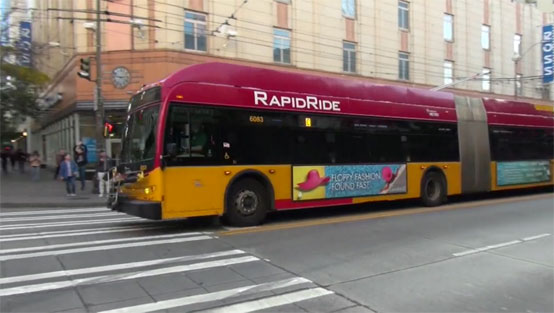Seattle is one of the fastest growing cities in America, and it is making bold investments to ensure most residents live within walking distance of frequent transit.
"Seattle can’t handle any more cars than we currently have," says Seattle DOT Director Scott Kubly. "Our mode split needs to go from 30 percent single occupancy vehicle to 25 percent, and the lion's share of that is going to be carried on the bus."
The city’s efforts are paying off -- both bus and rail ridership have seen huge gains in recent years, and 70 percent of trips to downtown Seattle are not in private vehicles.
In the past two years, city voters approved the $900 million Move Seattle transportation levy, and then regional voters enacted the Sound Transit 3 package, a $50 billion transit expansion plan. These were votes of confidence in the transit system and the agencies that run it.
Seattle is demonstrating how trains and buses can work in tandem to build a fast, frequent, and reliable network that wins over riders. A key factor behind this success is the leading role played by city government, which actively works to improve transit instead of passively following county and regional agencies.
The Seattle story demonstrates that when governments create clear transportation priorities, provide thoughtful, goal-oriented planning, and deliver good service, ridership goes up and a firm foundation of public support can be established.






